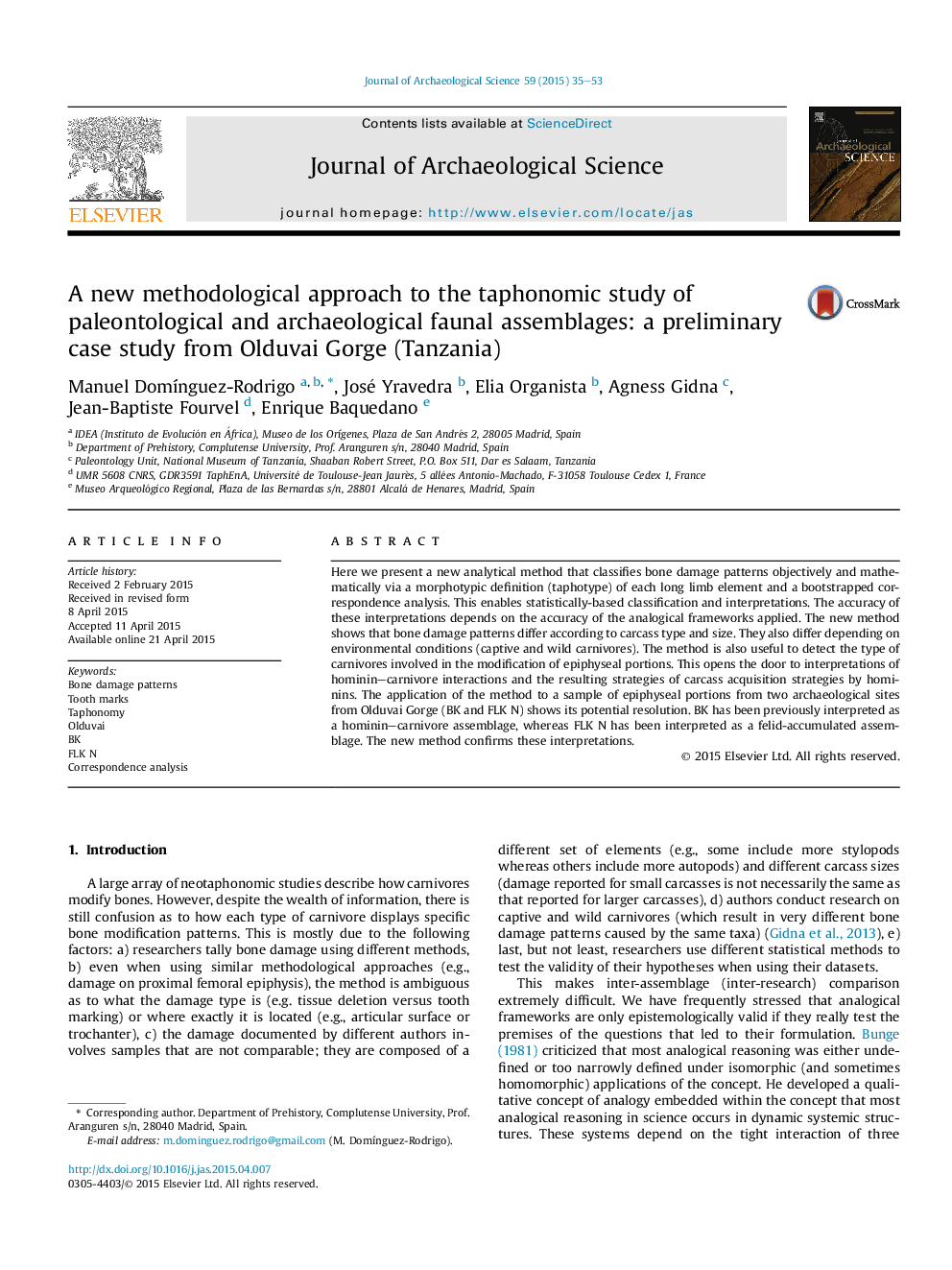| Article ID | Journal | Published Year | Pages | File Type |
|---|---|---|---|---|
| 1035355 | Journal of Archaeological Science | 2015 | 19 Pages |
•Bone damage patterns created by carnivores can be morphologically classified.•Taphotypes are different categories of bone damage.•These can be compared statistically.•Bootstrapped correspondence analysis differentiates carnivore types.
Here we present a new analytical method that classifies bone damage patterns objectively and mathematically via a morphotypic definition (taphotype) of each long limb element and a bootstrapped correspondence analysis. This enables statistically-based classification and interpretations. The accuracy of these interpretations depends on the accuracy of the analogical frameworks applied. The new method shows that bone damage patterns differ according to carcass type and size. They also differ depending on environmental conditions (captive and wild carnivores). The method is also useful to detect the type of carnivores involved in the modification of epiphyseal portions. This opens the door to interpretations of hominin–carnivore interactions and the resulting strategies of carcass acquisition strategies by hominins. The application of the method to a sample of epiphyseal portions from two archaeological sites from Olduvai Gorge (BK and FLK N) shows its potential resolution. BK has been previously interpreted as a hominin–carnivore assemblage, whereas FLK N has been interpreted as a felid-accumulated assemblage. The new method confirms these interpretations.
Graphical abstractFigure optionsDownload full-size imageDownload high-quality image (132 K)Download as PowerPoint slide
